The heart of Hastings town centre takes shape.
This article contains affiliate links. We may earn a small commission on items purchased through this article, but that does not affect our editorial judgement.
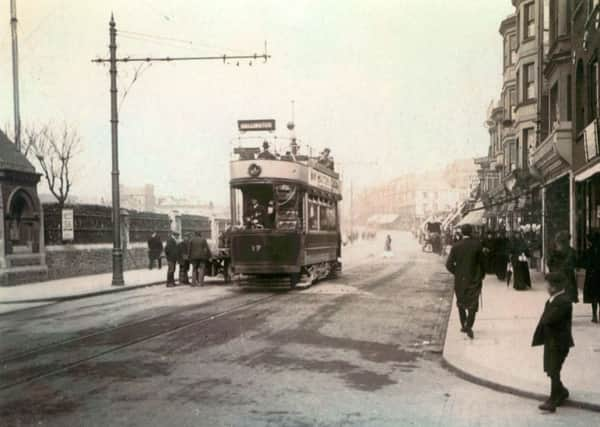

He writes. As Hastings expanded out of the Old Town Valley in the early years of the nineteenth century it grew westwards along the seafront.
It passed the castle cliff which, in the 1820’s was cut away to build Pelham Crescent, then past a nearly complete Wellington Square (originally called Waterloo Square).
Advertisement
Hide AdAdvertisement
Hide AdThe Square had the Castle Hotel, that opened in 1818 and was demolished at the end of the 1960’s to be replaced with a totally inappropriate Tesco store.
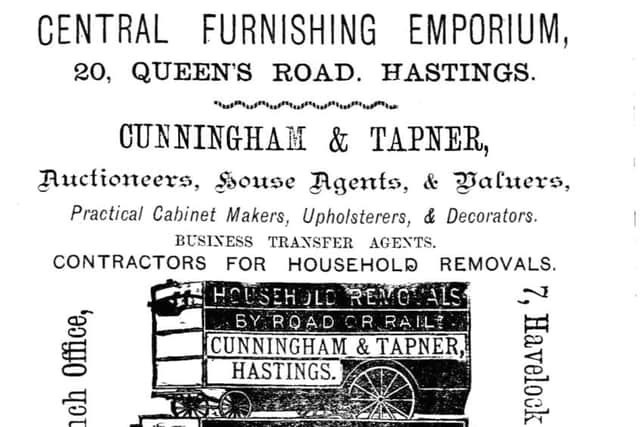

This led to Russell Street (initially named Blücher Street, after Prince Blücher, the leader of the vital Prussian forces at the Battle of Waterloo. The houses of York Buildings, now a row of shops, were the first development in the Priory Valley and had been built by 1811.
Development moved round the corner of Hayter’s York Hotel and headed inland. In 1876 Hastings Council renamed the roads until then called Queens Buildings, Meadow Road and Bedford Place, as Queens Road.
Meadow Road extended beyond the Town Hall and Gaiety Theatre until it met up with Bedford Place where what is now No. 26 Queens Road was in Meadow Road and No 27 was 1 Bedford Place.
Advertisement
Hide AdAdvertisement
Hide AdThis row of houses looked out onto the ‘Central Cricket and Recreation Ground’ which opened in 1864. Formerly the Priory marshes, the ground had been drained and levelled and hosted not just cricket but also circuses, flower shows, public meetings etc. The area is now the Priory Meadow shopping centre
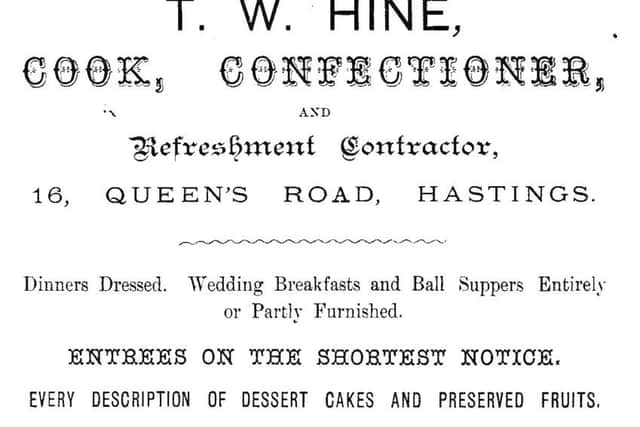

Many of the businesses that occupied premises in Queens Road backed onto properties in Russell Street and had access from both streets. Shop occupancy then, as now, was in a constant state of flux with some shopkeepers staying longer than others.
All illustrations throughout this series are from Ion Castro’s own collection and he can make available copies of many of the historic images used in this series. There’s more local history on Ion’s website, www.historichastings.co.uk
Captions:
Albert Hotel.
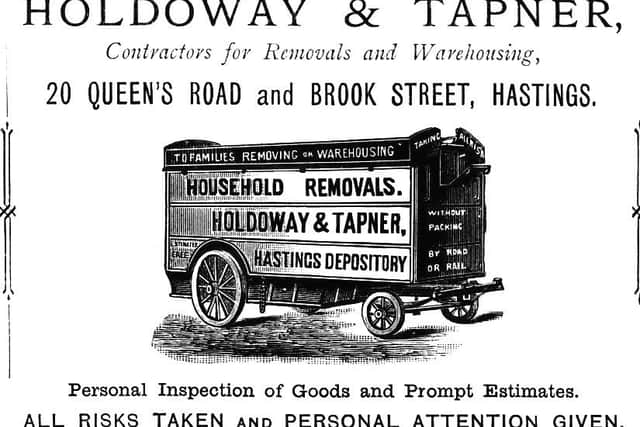

The Albert Temperance Hotel, No 10 Queens Road opened in the 1880’s but, by the 1920’s had ceased to be a hotel and had become offices, some of which were occupied by Hastings Borough Council until the building, along with a couple of its neighbours were demolished for road widening when the town centre was pedestrianised.
1873 OS map.
Advertisement
Hide AdAdvertisement
Hide AdMany of the houses in Meadow Road have not yet been converted into shops and still have their front gardens; they would later be built over but the upper stories can still be seen today
Foord 14.
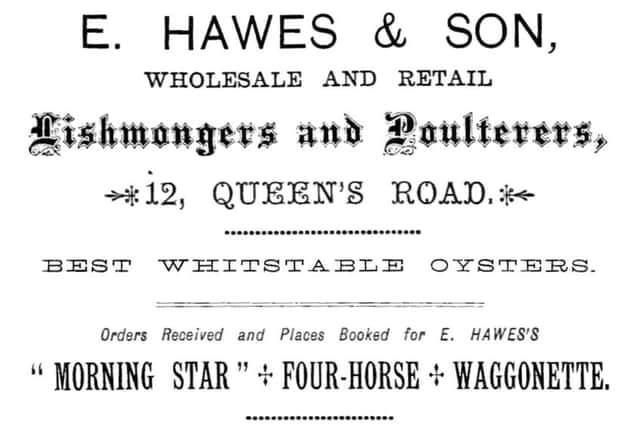

A bill for spectacles from 1907
Gilbert 13.
Gilbert at No 13, The shop used to have a magnificent arched glass roof and is now on the corner of Albert Road.
Hawes 12.
No 12 Queens Road, has now gone, a victim of the widening of Albert Road but in 1885 Hawes had an interesting trading model, Fishmongers, Poulterers and a four-horse wagonette offering a variety of day trips.
Cunningham & Tapner 20.
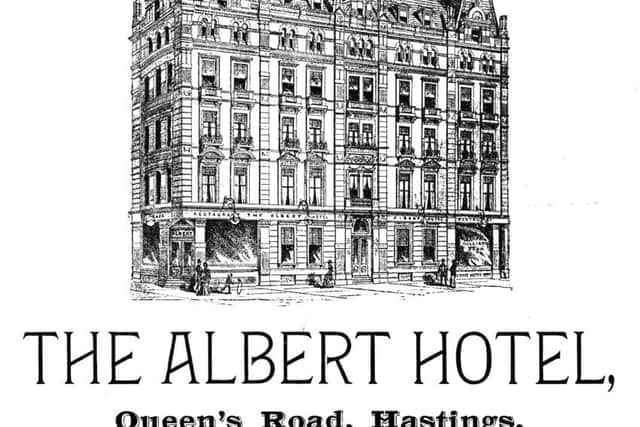

No 20 Queens Road, This advert from 1885 shows Cunningham & Tapner before they became Holdoway and Tapner. This firm would go on to occupy various premises in Queens Road and eventually had their warehouse in Waterworks Road.
Holdoway & Tapner 20 & 28.
Advertisement
Hide AdAdvertisement
Hide AdThe evolution from Cunningham & Tapner into Holdoway & Tapner carried with it expansion from, 20 Queens Road and now included No 28
Hine 16.
In 1885 No 16 Queens Road was occupied by Hine the Refreshment Contractor and Confectioner, they were apparently sole manufacturers of the genuine Swiss Bun.
Madam Teacher 16.
By the 1920’s Hines Confectioners had become Madam Teacher’s French Model Shop, presumably without the connotations and innuendo that such a description would have today.
Wm Morris 23.
When the picture was taken at the end of the 19th century Mr Wm. Morris had been running The Criterion” Dining, Supper and Refreshment Rooms, 23, Queens Road for seventeen years having taken over from a Mr Corbyn.
Advertisement
Hide AdAdvertisement
Hide AdA contemporary account tells us “The premises have an extensive and handsome frontage in Queen’s Road, opposite the cricket ground, and therefore, in a very central and convenient position. The interior contains three spacious and well appointed dining-saloons, with smaller rooms for private parties, the accommodation altogether enabling ‘150 guests to be dined at once and the cooking and attendance are of a very superior character.
“Hot lunches are supplied daily from 12 to 2.30 pm, but chops, steaks, teas, cold lunches, and other light refreshments are available at any time, and special dinners and suppers can be provided in first class style at short notice. The ‘Criterion’ has a high reputation for choice wines and high class ales and stout, and is specially noted for delicious pork sausages and fresh vegetables. The sausages are specially made from the choicest dairy fed pork, reared on Mr. Morris’ own farm at Guestling, where about fifty pigs on an average are kept, besides a large number of fowls”.
The premises extended through to Russell Street where there was another entrance.
Wm Morris 23.
Advertisement for William Morris at No 23, they also provided accommodation.
Rose 21.
Advertisement
Hide AdAdvertisement
Hide AdAt the end of the 19th century Rose’s Family Grocers at No 21 Queens Road also had an entrance in Russell Street.
Tram 17.
This postcard from about 1910 shows one of the pair of gate houses that flanked the entrance to the Cricket Ground, it has now gone but its twin survives as a coffee kiosk. The boundary railings can still be seen and it will be many years before the cricket ground will be hidden from view by a row of shops before being transformed into a shopping centre.
Walters 19.
E Walters at No 19 in 1885, in the days when such ornamentation was commonplace and all done by hand by craftsmen.
Don’t miss out on all the latest breaking news where you live.
Advertisement
Hide AdAdvertisement
Hide AdHere are four ways you can be sure you’ll be amongst the first to know what’s going on.
1 Make our website your homepage at www.hastingsobserver.co.uk
2 Like our Facebook page at www.facebook.com/hastingsobserver
3 Follow us on Twitter @HastingsObs
4 Register with us by clicking on ‘sign in’ (top right corner). You can then receive our daily newsletter AND add your point of view to stories that you read here.
And do share with your family and friends - so they don’t miss out!
The Hastings Observer - always the first with your local news.
Be part of it.